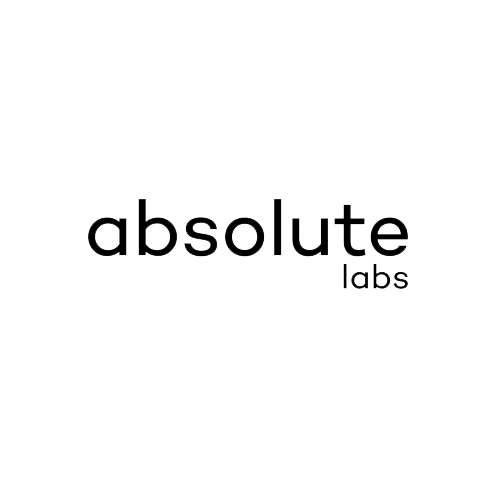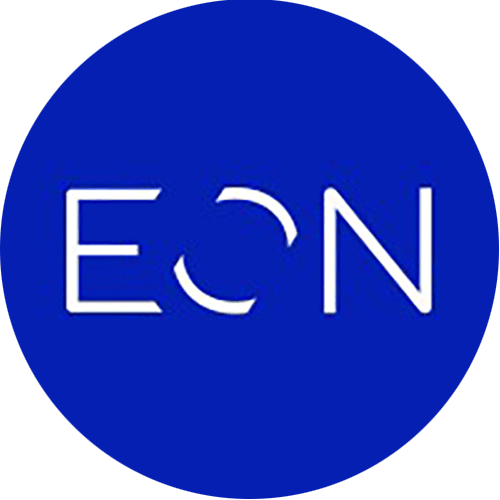Dematerialzd Researcher Marc Baumann Discusses the Post Starbucks Business Value of NFTs at NFT.NYC
During the NFT.NYC 2024 Conference in New York, Blockchain Journal editor-in-chief David Berlind interviews one of the speakers at the event: Marc Baumann, founder of FiftyOne Ventures and Dematerialzd.xyz. Baumann is well-known for his opinionated analyses regarding the NFT-based customer loyalty and engagement programs operated by some of the world's biggest brands. The discussion delves into the evolution of NFT use cases, which famously (or infamously, depending on your point of view) began with collectible digital images. Baumann responds to David's questions with a walk down memory lane, examining the past and current NFT landscapes, and eventually ends with some predictions about some of the more nuanced use cases, focusing on tangible business outcomes.
Baumann identifies four key verticals where NFTs are making waves in business applications. The first, tokenization and phygitals, involves the 1:1 marriage of physical items with their digital counterparts on-chain, often facilitated by near-field communication (NFC) chips. According to Baumann, this results in myriad possibilities for post-purchase activations and direct consumer engagement, such as unlocking rewards or exclusive experiences tied to the possession of specific products. Baumann talks about how physical items become proxies for their digital counterparts and vice versa, paving the way towards the idea of token-gating, a fusion of the physical and digital realms where either "twin" grants the holder exclusive, "velvet rope" style access to real or virtual world (a.k.a. "metaverse") customer journeys.
Baumann also leans into loyalty and rewards, community and commerce, and data insights as the other three key verticals. Baumann emphasizes the need for brands to move beyond the allure of NFTs as standalone collectibles and instead focus on solving real business problems, creating value for consumers, and generating measurable ROI.
Baumann and David spend a fair amount of time discussing the history of the recently scuttled Starbucks Odyssey NFT program as a bit of a stain on the NFT landscape. This leaves open the question of how, if a big brand like Starbucks can't make NFTs work, what enterprise can? This brings the discussion full circle back to the challenges associated with collectibility (one of the main features of the Odyssey program).
(The full-text transcript appears below.)
Published:April 12, 2024

13 min read
Audio-Only Podcast
Full-text transcript of David Berlind's Interview with Marc Baumann, Founder FiftyOne Ventures and author of the Dematerialzd.xyz Blog
David Berlind: Today is April 4th, 2024. I'm David Berlind with the Blockchain Journal podcast. I'm coming to you from NFT.NYC 2024, an event on the west side of Manhattan at the Jacob Javits Center where the conversation is all about NFTs or non-fungible tokens.
And, standing with me is Marc Baumann. He is the founder of FiftyOne Ventures and also the Dematerialzd.xyz blog. And, Mark does a lot of coverage of all the different NFT programs out there. Marc, thanks very much for joining us on the Blockchain Journal podcast.
Marc Baumann: Yeah, happy to be here. Thanks.
Berlind: It's terrific to have you. And I'm a fan of yours. I follow a lot of what you publish on LinkedIn. And... Oh, by the way, at the end of this video, we'll put some QR codes up where you can not only connect with me and Blockchain Journal, but you can also connect with Marc.
So you write a lot about the different NFT programs that are out there, what's working, what's not working. You have a really good sense of what the different use cases are for NFTs, for big enterprises. So, I think I'd start there and say... Let's maybe go through three or four use cases that are your favorites for how enterprises can put NFTs to work to drive newer and improved business outcomes.
Baumann: Sure. So what we've seen in the last two years is a lot of brands entering the space. We saw about 50% of inter-brand top 100 global brands experimenting with NFTs with Web3 activations. Most of that was just NFT collections, and what we're seeing now is that those brands saw that that was great. That was fun. That was somehow cool. But most of those things didn't actually work. Most of those things didn't create sustained engagement. They didn't solve any real business problems. They didn't create actual value for their customers. And they didn't generate any ROI. So, we're moving out of of that phase where brands are just looking at NFTs as a tool [for] creating collections and put them out there.
But we see now that we have a couple of verticals emerging that brands focus on. And, at the moment, I see four verticals. One of them is tokenization and phygitals.
Berlind: Wait a minute, phygital. That's a word that some of the members of our audience are not going to understand. So, let's just pause. What does "phygital" mean?
Baumann: Phygital is just a fancy word that kind of got ingrained into the culture of Web3. That's why I use it. But it's basically the same as tokenization, and tokenization is nothing else than having a physical product, tokenizing it and putting it on-chain so it has digital counterpart.
Berlind: This is sometimes referred to as a digital twin, the digital counterpart. The NFT that's on-chain is a digital twin to a physical product in the real world, and those two are sort of inextricably linked from that point forward, but it's a one-to-one relationship. Here's one NFT, here's one physical item, maybe it has a serial number on it or something like that, and those two things are married to one another.
Baumann: Exactly. Serial number, QR code, whatever... a chip. [There are] lots of things happening with chips now, especially in fashion. So, that's exactly it, and there are several terms that are thrown around which basically mean the same. It's a tokenized product; it's a phygital; it's a digital twin, but also real-world assets or RWAs – that's also a recent word.
Berlind: Let's talk about it — one second. You said a chip. So, just so that our audience understands, because this is where the technologists are going to be interested in how you do this. How do you you accomplish this digital twinning of a digital asset that's on-chain – an NFT – and a physical item? You put a chip on the actual physical item, right? Like, what kind of chip is that?
Baumann: That's just a normal NFC chip.
Berlind: That's a near-field communication chip.
Baumann: Exactly, yeah. And that's probably the most used technology now to enable phygitals or tokenized products. A lot of companies are building that. We have one in Switzerland that's called CollectID. We have IYK here in New York. We have EON, also based in New York. And that's basically a commodity.
Berlind: And so these chips, like an NFC chip, they're uniquely coded. They have some kind of unique identification. So, you take the unique ID of the chip and you tie it to the unique NFT on-chain, and now you have that marriage of the two, is that right?
Baumann: Exactly. Yeah, yeah. And then that's one vertical, and that's something a lot of brands are experimenting [with] now, especially in fashion, a lot of luxury brands. An example is Dior. They released a B33 sneaker. We saw it with Adidas, we saw it with Nike. Yeah, [there are] just many, many different brands and sports clubs experimenting with that.
But, the actual interesting part is what happens after you chip a product because then the actual work starts. Chipping itself is not an issue. But how do you use that digital-physical relationship to engage with your consumers?
Berlind: And what are brands like Adidas or Nike doing?
Baumann: At the moment, there are two different things you can do with it. Either it's it's driven by the digital product passport regulation, that's coming in the EU in the coming years, which requires brands to store certain information of a product somewhere accessible for the user in a digital way. Blockchain is a good tool for that. So they start using chip products on-chain to enable that. And, on the other hand, it's a good tool for the user in a digital way.
Berlind: What sort of information is the EU asking companies to put, not necessarily to store on-chain – they're not prescribing the technology – but what are they asking? What information are they asking manufacturers to put on their product[s]?
Baumann: Any kind of information. This could be like product materials. This could be supply chain information – where it comes from. Lots of different types of information.
So, that's one thing, and the other thing is post-purchase activation. So soon as a consumer buys a physical product, maybe not even in your own store, but on a second or third-party platform, and that consumer then scans that product and receives it an NFT, you establish a direct consumer relationship and you can start targeting those consumers either through owned platforms that those companies provide, that build the chips as well. Or, you can start engaging them in other ways by, for example, in real-life events where you open gate certain experiences or you publish content, and you token gate it to the holders of a specific physical product because now they have it in their wallet and you can actually measure that. Or you...
Berlind: Token gating. Let's stop there for a second because that's another really interesting concept that enterprises are going to find very interesting.
Token gating is essentially if you have the physical item that's chipped and is married to an NFT token that's on-chain, then essentially the physical item becomes a proxy for that token, and then you can use that physical item to gain entry into a physical event where other people wouldn't be able to gain that access.
So, I can imagine, like, a VIP area at a sporting event. If you are wearing the Adidas shoes that are chipped, they scan the shoe, and you're in because that and that's a form of token gating.
Baumann: Exactly, yeah. So what that all means is you basically have a physical product that wasn't digital before, you digitize it. You just digitize it with a chip, you put it on-chain, and from that point, it just becomes a kind of walkable digital experience that you can program in any way.
So, whether you attend an event or whether you require a customer to wear a certain product a couple of times and unlock rewards or whether you tie it to a physical locations that you need to be at, whether you tie it to someone else who has the same product that you need to meet up in real life, you can do everything with it, basically.
Berlind: Okay, so you mentioned there's three or four [examples of] tokenization. That's just one, what are the others?
Baumann: Yeah, yeah. The other ones are loyalty and rewards. That's a big emerging vertical. The third one is community and commerce, which means not only kind of community-led NFT collections who are now building up IP and kind of mass-consumer brands but also brands – traditional brands – who experiment with NFTs as a tool for community creation and build their brands into communities. And it also means community experiences on virtual platforms, like Roblox and Fortnite and Zepeto, where you see a lot of next-gen consumers – younger gen set consumers – playing hours [and] hours a day and just experiencing gaming together in a community. And that's one of the mega-trends and it flows together with community, immersive commerce, spatial experiences, and all that. That's the third vertical, and the fourth one is data and insights.
Berlind: What's that?
Baumann: That's basically everything. Every additional data point you get with users interacting with digital assets on-chain or decentralized apps (dApps). Basically, everything that runs on a blockchain and users interact with their wallet is somewhat tracked and stored in a wallet. Every digital asset they have is stored in a wallet that's openly accessible on-chain, and that provides a lot of the points for brands which are very interesting and are sought after because the cookies are fading away.
Berlind: Yeah, we just had a conversation with Rocky Miller at Mojito, who spoke in the session about NFTs – or the new cookies. And it's very true, especially given the recent announcement by Google that they're going to sort of deactivate third-party cookies in Chrome.
So basically, this fourth category really depends on the other three, right? Because you have to have all this activity taking place with community and tokenization to generate that data. But this fourth category then takes a look at that data and says, "What insights can we gather from it?"
Baumann: Yeah, exactly. That's a very good point because I think data and insights is one of the biggest opportunities for brands in that space in general, but it's also the least developed. And as you say, it only becomes very, very powerful as soon as we get this technology [in]to more adoption and brands don't to use it and everyone starts to use it and people have wallets, and then you can start connecting the dots and create real useful data. At this point, it's very, very narrowed down to a niche community of Web3 users. That might not be interesting for brands or not in the target group that they want to focus on.
Berlind: And, of course, the tools kind of don't exist yet. Like, there needs to be a lot of tools. built out there, you know, to essentially with a mouse click, generate like some kind of insight.
Baumann: The tools do exist, a lot of startups build on that. And they are quite advanced already. We have Cookie3 in Europe, we have Absolute Labs, we have the Safary growth team here in the US. And they all build very, very good products.
Berlind: Okay, I haven't heard those solutions, it's great to hear. While I have you, are you a Star Wars fan?
Baumann: No.
Berlind: Okay. In Star Wars, in the first Star Wars, a planet, a whole planet with people on it gets destroyed by the Death Star. And, when I look at what just recently happened with the Starbucks Odyssey program, very suddenly just getting canceled. Although, I think there were some signs that we saw throughout the last year that things were not going terribly well with that program. But it was one of the most visible big enterprise NFT customer loyalty and engagement programs, and now, suddenly, it's gone. And I'm sure other enterprises are going to be looking at that and saying, "Well, if Starbucks can't make it work, then maybe we can't either."
They're going to be influenced by the fact that this company took this major investment into NFTs, And boy, they invested a lot. I mean, they did invest a lot, they tried everything: augmented reality, they did an integration with their existing Starbucks rewards identity management system. There's a lot of work that went on there. How is this going to influence a company?
Berlind: I think Starbucks is a great case to show that we're at an inflection point.
So, we saw the last two years brand[s] entering the space, experimenting with collectibles. Starbucks was one of them. I think they did a very, very good job in designing the whole program. They were seen as a benchmark case for loyalty rewards [and] engagement with collectibles and NFTs. But we also saw that that was very, very confined to a niche audience of Starbucks.
If you look at Starbucks and what they do with rewards and loyalty, they have the most successful rewards program in the world. They have 75 million people in there. They have 30 million people in the US, and Starbucks Odyssey had 35,000 members. And they generated about 1 million in revenue in the first year from that through collectible sales but also royalty fees they had on [the] trading of those collectibles, and they received, by the way, you didn't mention that 4 million from Polygon to launch that program.
Berlind: So, that was a rumor, so I can't really state that. I mean, I've never seen the actual factual information about that, but a lot of people talk about that investment. So, they use that to basically jumpstart their program, but at some point that money runs out.
Baumann: Exactly. So they generate[d] about one million [dollars] in revenue from that program, which is.. probably makes them... probably about break even. But even now, if you scale that to a larger reward, loyalty reward base... So, like, assuming they would scale that to 10% of the royalty rewards members, they would generate about 200 million in revenue, which would be about 0.2% of their total global revenue in a year, and that's just not enough. It's not scalable enough. It's not accessible enough and it doesn't provide enough value for the general customer base of Starbucks. And I think what brands need to figure out now and what they're doing is and they recognize that we're beyond that phase where it's just about NFTs and collectibles.
It's actually a much bigger narrative of: what is the future of consumer engagement? And that requires them to answer three questions. The first is what actual business problems do we solve? What is the value that we create for consumers? And, how do we create actual ROI for the business? And that's what they need to figure out now. And for that, they need to look beyond NFTs. NFTs is just a small puzzle piece of the future of consumer engagement. The story is much broader, is much bigger. And the big mindset shift that needs to happen is also not there yet.
And the mindset shift is the phase we're in now. Joseph Lubin talked about it last year at Paris Blockchain Week. He called it the beginning of a new supercycle. I think that supercycle we're in is that we had blockchain technology coming along in the last years and we saw this technology enable... giving power from institutions back to the people from platforms back to users and from brands back to consumers. And, that's a mindset shift for brands, which is very difficult and new, but that needs to happen, and I don't think that a lot of brands are there yet, and that's that's going to be very, very important for the next phase of Web3 and consumer[s].
Berlind: Marc, some incredible insights for me thank you very much for joining us on the Blockchain Journal podcast.
Baumann: Thank you as well.
Berlind: We've been speaking with Marc Baumann, who is the founder of FiftyOne Ventures and Dematerialzd.xyz. If you want to find more of his insights, you can go to his LinkedIn profile, where he makes tons of posts about these very topics, and then links to his blog, where he writes more in-depth about them. So, we're going to put the QR codes up after the video is over. Be sure to check those QR codes out, and you'll be able to connect with Mark and his content.
If you want to find more of Blockchain Journal's content, just go to youtube.com/@blockchainjournal, or you can go to our website, blockchainjournal.com, where you can find this video, a whole bunch of other videos, and all the full-text transcripts.
Thanks very much for joining us, and we'll see you at the next video.





















